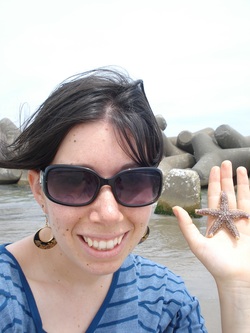
What do you know about Japanese music? One of these things might come to your mind:
1. If you don’t know anything about Japanese music, you’re probably thinking about sumo wrestlers and ninjas hollering “Banzai!” at the top of their lungs. Or karaoke.
2. If you’re into manga and Japanese anime you’ll have no problem listing a few J-pop bands like Exile or Bump of Chicken, probably even a few Korean groups that are popular in Japan.
3. The folks with a scholastic background might think of indigenous instruments like the koto or shamisen, or traditional Japanese songs that are endeared by the retired Japanese population. Enka.
4. If you’re super eclectic about music you may know the stray Japanese punk or indie band that’s trying to make it big out of their parents’ garage.
5. But NONE of you would say “gospel.”
Little does anyone know that gospel music in Japan is a steadily growing genre among middle age Japanese. I don’t have any written facts to back that up, just my personal observations from attending concerts and talking with various people.
When I first came to Japan I learned that one of our teachers was the leader and director of a gospel group that met twice a month at the community center. It was a sprightly group of about 12 members. Sometimes more, sometimes less. This group has been meeting for 3-4 years singing at community events for occasional performances. The repertoire is exclusively religious though spanning a noticeable range of “gospelness.” For example, the stereotypical “Go Down, Moses” makes way for the old hymn “Amazing Grace” yet charges through to contemporary gospel compositions and arrangements like “Lord, You are Good.” For a nation largely ignorant of Christianity and its roots, it was very surprising to learn of the popularity of gospel music.
Japan is known for intricacy and devotion in their work and civilian lives. They are proud to be set apart by their uniqueness and cohesiveness as a people—it’s how they survive. They are also adept at taking foreign ideas and physical items and modifying them to fit in a Japanese world. Actually, it’s more like evolving these things to become acceptable to Japanese mainstream. Gospel is no exception, and since the religious and personal meaning of gospel music is largely lost in translation it becomes simply a musical experience. The lyrics are an exercise of English pronunciation, the beat a test of clapping on 2&4, the music a beautiful arrangement of harmonies and breakout soloists, and the style a step outside the comfort zone as they’re encourage to stomp, sway, and follow the leader’s arm movements. These musical differences are indeed an enticement to the average housewife looking for an hour out of the house, or the hard-working office lady in need of a fun hobby with good friends. The retired fellows add one more activity to fill their weekly schedules. The people who attend gospel are well-meaning, kind-hearted, and very interested in gospel music. They love learning the interpretations, singing in either Japanese or English, and love filling the air with beautiful sound. However gospel has not escaped the ruthless evolutionary gauntlet imposed on all foreign entries. It has been stripped of religious significance and set up as “just another genre” that anyone can sing successfully if the right amount of practice and devotion is dedicated. If you’ve been to Japan I hope your experience has been like mine; Japanese people on the whole are very kind, thoughtful, helpful, and go above and beyond our American standards of service and sometimes even humanity. Gift wrapping in a store is expected. Giving someone directions means you TAKE them to that place, even if it’s out of your way. They’ve made an entire industry in omiyage, which is bringing back presents and treats to your entire office and every one in every group you are affiliated with (PTA, boy scouts, piano teacher, gospel choir members). I recently bought a stack of books in Tokyo and the store offered to send them anywhere in Japan for me for free so I wouldn’t have to carry them home on the train.
I do not doubt the intentions of Japanese gospel singers; they want to be fully participating and understanding of gospel music. My point is that Japanese people are very accommodating and friendly, and they tend to add things instead of delete them to avoid confrontation and save face.
Oh, you can’t make English class anymore because you added a math class to improve your failing grades? Let’s just not show up anymore but keep the name on the roster so that it looks like you still want to take English classes. At the end of the year you can formally withdraw.
Oh, you have conflicting schedules between hula dance class and photography? Just do half-time at both of them so that we can see you're really trying to be there.
Oh, you have Shinto and Buddhist beliefs? That’s cool. You should join a Christian gospel choir to even things out.
Now, I’m being a little sarcastic but don’t make the mistake of thinking these things don’t happen…because they do. To my knowledge, none of the Japanese members in our gospel choir are Christians. They know my American friends and I are believers in Christ and they understand that the message of gospel music is to essentially proclaim Christ’s love for the world. However, in true Japanese fashion they take the parts they want and change it to fit their culture. You don’t have to believe it on the inside as long as the outside looks compliant and harmonious.
Link: Christianity in Japan
I am happy to share my deepest beliefs with anyone who has an interest and sharing it through music is even more desirable. I love music! I’m not regretful at all of being a part of gospel choir or even now as the director, leading the choir through each practice session and teaching the pronunciations and meaning of the lyrics. The part that makes me most sad is that there is no feeling behind the words. There is no belief in the power of God. There is no heart singing praise to the Lord of Creation, no lips uttering thanks to Jesus for taking the responsibility of death for our wrongdoing against a righteous God, no hands raised reverently in awe of the love of Christ. Instead there are voices filling the air with sound. There are eyes carefully watching me, copying my movements in effort to be in sync with the group. There are swaying bodies and hands tenaciously waving in the air to mimic the gospel groups they’ve seen on youtube.
No heart. No soul. No emotion.
Is that not the epitome of all music ever? It doesn’t inherently belong to the gospel genre, but any musician who is void of those three things can be immediately spotted and blacklisted by the casual listener. As the leader of Funehiki Gospel Choir, practices can be a little disheartening when the music becomes no more than notes on a page.
A member of my choir is very dedicated to gospel music and frequently attends workshops and concerts. She informed me of a particular one in nearby Iwaki, though not being able to attend herself another choir member and friend, Manri, went with me. We drove out to the coastal town previously ravaged by the tsunami and cast into tourism darkness because of the nearby reactor crisis. Tourism is back on track with the reopening of The Hawaiians, and the beach is cleaned and ready for swimmers and surfers…though it was somewhat lacking visitors that holiday morning. We walked along the beach picking up shells for my garden decorations. We saved a starfish from certain death in the shallows and sent it back to the ocean after taking a few pictures with our textured friend. The waves were shallow and strong, the gulls flew overhead with their familiar high calls. I looked out to the east as far as I could see to say hello to America…somewhere out there. After learning how to say, “This is a broken shell. This is not a broken shell,” in Japanese and walking along the beach for a few hours we returned to downtown Iwaki and into the concert hall. Looking at the program I realized the enormity of the concert. 4 hours long, no intermission. The entire northern region of Japan sent local choirs to the festival and because of the sheer number of people involved, they had to conglomerate into 4 mass choirs of no less than 100 people each. The kids had their own choir. The city of Iwaki had their own choir of 300 people. In my opinion they completely defaced the meaning of gospel by singing “Heal the World” by Michael Jackson and another song by Elton John. Anyways. Between these mass choirs were selected performers: hula dancers (having NOTHING to do with gospel but significant to the town), a combo enka/gospel group (purely entertainment value), and a couple from American who make their living singing gospel music. They were legit.
After sitting through the first half of the concert I couldn’t help but wonder how many people actually believed what they were singing. How many people actually understood the lyrics of the songs? I’m not gonna lie, “Christianese” is the set of words that are typically used in the church and not easily understood or related to people with no church background.
When the black American couple took the stage, they didn’t hold back. Musically and performance-wise they were great. They had the band, the lights, the matching costumes, the energy. They got the audience on their feet and encouraged singing along to the projected words on the screen. I didn’t need the words, I knew “Lord, You are Good” by heart and even learned a signed interpretation of it. It was here the mood switched, not only in the room but in my heart. For the first time in Japan, I was standing with a crowd singing praises to Jesus in my native language. When I say crowd I mean the hundreds of people who filled the concert hall, not the ten of us Americans who meet each Sunday evening.
All the complaining I’ve done in this blog doesn’t address the fact that there were in fact Japanese Christians who attended the concert and sang in gospel choirs. Now that those people were standing in front of their chairs and not on an obligatory riser on stage I could see and feel those willing hearts around me. At first the crowd was singing loudly and clapping, then the clapping subsided slightly as many of us raised our hands in worship. The words of this song will never mean more to me than they did at that moment:
“People from every nation and tongue, from generation to generation we worship You for who You are: You are good. Lord, You are good and Your mercy endureth forever.”
These were people whose lives had been destroyed by the recent earthquake and tsunami, lost friends and relatives, lost their jobs and had to move, lost their homes and live in temporary housing. People who are the minority, the 1% of the population who believe in a God and a faith that doesn’t have roots in their country or culture. People praising God in another language, sharing the experience with foreigners like me all for the sake of God’s love and unity in Christ. I became aware of my own inhibitions, my own fears of fully following God. I recognized my own shallowness and judgmental behavior. I saw myself drawn up and in, protecting myself from being broken. In fact it was brokenness required of me to become healed by God the Healer, willingness to be led by Him during my remaining time in Japan. I still don’t understand many Japanese behaviors and social rationale and probably never will, but I can love people and share my experiences with them; I can share the gospel that I have in my heart and show the love of God through my actions.
I didn’t even care that we sang the same line over and over again; I didn’t want it to stop ever. I just wanted to continue with my brothers and sisters in Christ, praising our Audience of One.
That’s the day I found God in Japan. He was here all along, waiting for me to worship Him with all my heart, soul, and emotion.
1. If you don’t know anything about Japanese music, you’re probably thinking about sumo wrestlers and ninjas hollering “Banzai!” at the top of their lungs. Or karaoke.
2. If you’re into manga and Japanese anime you’ll have no problem listing a few J-pop bands like Exile or Bump of Chicken, probably even a few Korean groups that are popular in Japan.
3. The folks with a scholastic background might think of indigenous instruments like the koto or shamisen, or traditional Japanese songs that are endeared by the retired Japanese population. Enka.
4. If you’re super eclectic about music you may know the stray Japanese punk or indie band that’s trying to make it big out of their parents’ garage.
5. But NONE of you would say “gospel.”
Little does anyone know that gospel music in Japan is a steadily growing genre among middle age Japanese. I don’t have any written facts to back that up, just my personal observations from attending concerts and talking with various people.
When I first came to Japan I learned that one of our teachers was the leader and director of a gospel group that met twice a month at the community center. It was a sprightly group of about 12 members. Sometimes more, sometimes less. This group has been meeting for 3-4 years singing at community events for occasional performances. The repertoire is exclusively religious though spanning a noticeable range of “gospelness.” For example, the stereotypical “Go Down, Moses” makes way for the old hymn “Amazing Grace” yet charges through to contemporary gospel compositions and arrangements like “Lord, You are Good.” For a nation largely ignorant of Christianity and its roots, it was very surprising to learn of the popularity of gospel music.
Japan is known for intricacy and devotion in their work and civilian lives. They are proud to be set apart by their uniqueness and cohesiveness as a people—it’s how they survive. They are also adept at taking foreign ideas and physical items and modifying them to fit in a Japanese world. Actually, it’s more like evolving these things to become acceptable to Japanese mainstream. Gospel is no exception, and since the religious and personal meaning of gospel music is largely lost in translation it becomes simply a musical experience. The lyrics are an exercise of English pronunciation, the beat a test of clapping on 2&4, the music a beautiful arrangement of harmonies and breakout soloists, and the style a step outside the comfort zone as they’re encourage to stomp, sway, and follow the leader’s arm movements. These musical differences are indeed an enticement to the average housewife looking for an hour out of the house, or the hard-working office lady in need of a fun hobby with good friends. The retired fellows add one more activity to fill their weekly schedules. The people who attend gospel are well-meaning, kind-hearted, and very interested in gospel music. They love learning the interpretations, singing in either Japanese or English, and love filling the air with beautiful sound. However gospel has not escaped the ruthless evolutionary gauntlet imposed on all foreign entries. It has been stripped of religious significance and set up as “just another genre” that anyone can sing successfully if the right amount of practice and devotion is dedicated. If you’ve been to Japan I hope your experience has been like mine; Japanese people on the whole are very kind, thoughtful, helpful, and go above and beyond our American standards of service and sometimes even humanity. Gift wrapping in a store is expected. Giving someone directions means you TAKE them to that place, even if it’s out of your way. They’ve made an entire industry in omiyage, which is bringing back presents and treats to your entire office and every one in every group you are affiliated with (PTA, boy scouts, piano teacher, gospel choir members). I recently bought a stack of books in Tokyo and the store offered to send them anywhere in Japan for me for free so I wouldn’t have to carry them home on the train.
I do not doubt the intentions of Japanese gospel singers; they want to be fully participating and understanding of gospel music. My point is that Japanese people are very accommodating and friendly, and they tend to add things instead of delete them to avoid confrontation and save face.
Oh, you can’t make English class anymore because you added a math class to improve your failing grades? Let’s just not show up anymore but keep the name on the roster so that it looks like you still want to take English classes. At the end of the year you can formally withdraw.
Oh, you have conflicting schedules between hula dance class and photography? Just do half-time at both of them so that we can see you're really trying to be there.
Oh, you have Shinto and Buddhist beliefs? That’s cool. You should join a Christian gospel choir to even things out.
Now, I’m being a little sarcastic but don’t make the mistake of thinking these things don’t happen…because they do. To my knowledge, none of the Japanese members in our gospel choir are Christians. They know my American friends and I are believers in Christ and they understand that the message of gospel music is to essentially proclaim Christ’s love for the world. However, in true Japanese fashion they take the parts they want and change it to fit their culture. You don’t have to believe it on the inside as long as the outside looks compliant and harmonious.
Link: Christianity in Japan
I am happy to share my deepest beliefs with anyone who has an interest and sharing it through music is even more desirable. I love music! I’m not regretful at all of being a part of gospel choir or even now as the director, leading the choir through each practice session and teaching the pronunciations and meaning of the lyrics. The part that makes me most sad is that there is no feeling behind the words. There is no belief in the power of God. There is no heart singing praise to the Lord of Creation, no lips uttering thanks to Jesus for taking the responsibility of death for our wrongdoing against a righteous God, no hands raised reverently in awe of the love of Christ. Instead there are voices filling the air with sound. There are eyes carefully watching me, copying my movements in effort to be in sync with the group. There are swaying bodies and hands tenaciously waving in the air to mimic the gospel groups they’ve seen on youtube.
No heart. No soul. No emotion.
Is that not the epitome of all music ever? It doesn’t inherently belong to the gospel genre, but any musician who is void of those three things can be immediately spotted and blacklisted by the casual listener. As the leader of Funehiki Gospel Choir, practices can be a little disheartening when the music becomes no more than notes on a page.
A member of my choir is very dedicated to gospel music and frequently attends workshops and concerts. She informed me of a particular one in nearby Iwaki, though not being able to attend herself another choir member and friend, Manri, went with me. We drove out to the coastal town previously ravaged by the tsunami and cast into tourism darkness because of the nearby reactor crisis. Tourism is back on track with the reopening of The Hawaiians, and the beach is cleaned and ready for swimmers and surfers…though it was somewhat lacking visitors that holiday morning. We walked along the beach picking up shells for my garden decorations. We saved a starfish from certain death in the shallows and sent it back to the ocean after taking a few pictures with our textured friend. The waves were shallow and strong, the gulls flew overhead with their familiar high calls. I looked out to the east as far as I could see to say hello to America…somewhere out there. After learning how to say, “This is a broken shell. This is not a broken shell,” in Japanese and walking along the beach for a few hours we returned to downtown Iwaki and into the concert hall. Looking at the program I realized the enormity of the concert. 4 hours long, no intermission. The entire northern region of Japan sent local choirs to the festival and because of the sheer number of people involved, they had to conglomerate into 4 mass choirs of no less than 100 people each. The kids had their own choir. The city of Iwaki had their own choir of 300 people. In my opinion they completely defaced the meaning of gospel by singing “Heal the World” by Michael Jackson and another song by Elton John. Anyways. Between these mass choirs were selected performers: hula dancers (having NOTHING to do with gospel but significant to the town), a combo enka/gospel group (purely entertainment value), and a couple from American who make their living singing gospel music. They were legit.
After sitting through the first half of the concert I couldn’t help but wonder how many people actually believed what they were singing. How many people actually understood the lyrics of the songs? I’m not gonna lie, “Christianese” is the set of words that are typically used in the church and not easily understood or related to people with no church background.
When the black American couple took the stage, they didn’t hold back. Musically and performance-wise they were great. They had the band, the lights, the matching costumes, the energy. They got the audience on their feet and encouraged singing along to the projected words on the screen. I didn’t need the words, I knew “Lord, You are Good” by heart and even learned a signed interpretation of it. It was here the mood switched, not only in the room but in my heart. For the first time in Japan, I was standing with a crowd singing praises to Jesus in my native language. When I say crowd I mean the hundreds of people who filled the concert hall, not the ten of us Americans who meet each Sunday evening.
All the complaining I’ve done in this blog doesn’t address the fact that there were in fact Japanese Christians who attended the concert and sang in gospel choirs. Now that those people were standing in front of their chairs and not on an obligatory riser on stage I could see and feel those willing hearts around me. At first the crowd was singing loudly and clapping, then the clapping subsided slightly as many of us raised our hands in worship. The words of this song will never mean more to me than they did at that moment:
“People from every nation and tongue, from generation to generation we worship You for who You are: You are good. Lord, You are good and Your mercy endureth forever.”
These were people whose lives had been destroyed by the recent earthquake and tsunami, lost friends and relatives, lost their jobs and had to move, lost their homes and live in temporary housing. People who are the minority, the 1% of the population who believe in a God and a faith that doesn’t have roots in their country or culture. People praising God in another language, sharing the experience with foreigners like me all for the sake of God’s love and unity in Christ. I became aware of my own inhibitions, my own fears of fully following God. I recognized my own shallowness and judgmental behavior. I saw myself drawn up and in, protecting myself from being broken. In fact it was brokenness required of me to become healed by God the Healer, willingness to be led by Him during my remaining time in Japan. I still don’t understand many Japanese behaviors and social rationale and probably never will, but I can love people and share my experiences with them; I can share the gospel that I have in my heart and show the love of God through my actions.
I didn’t even care that we sang the same line over and over again; I didn’t want it to stop ever. I just wanted to continue with my brothers and sisters in Christ, praising our Audience of One.
That’s the day I found God in Japan. He was here all along, waiting for me to worship Him with all my heart, soul, and emotion.
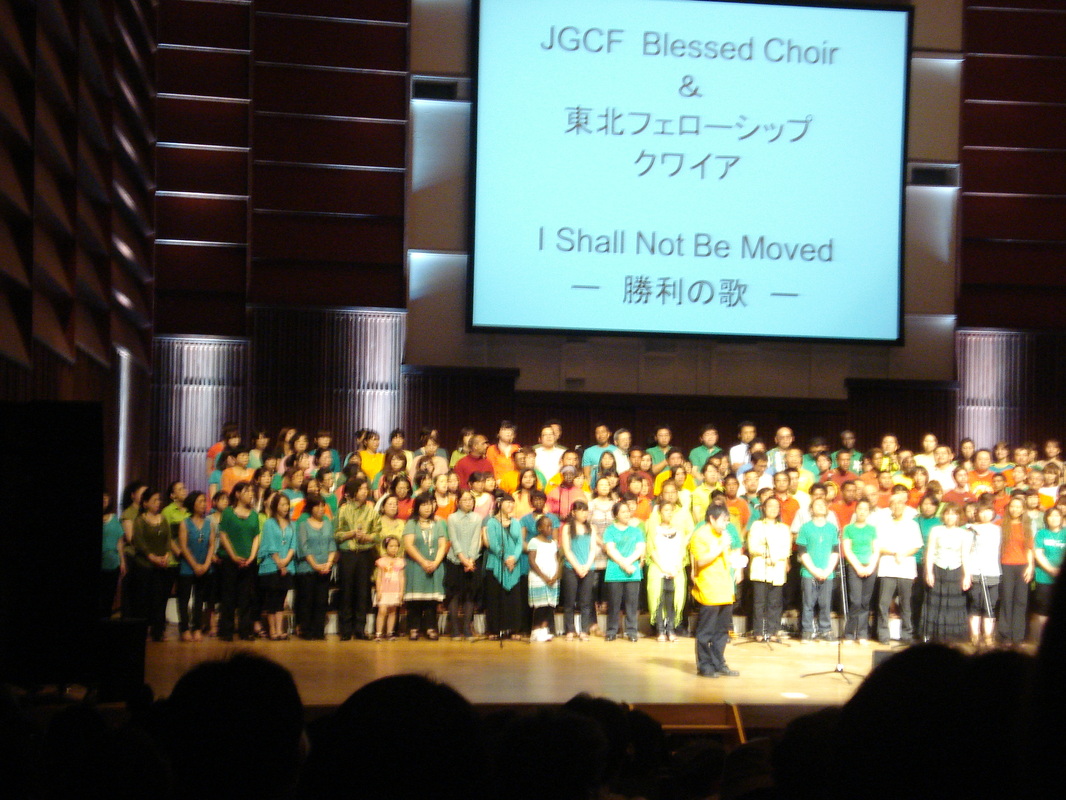
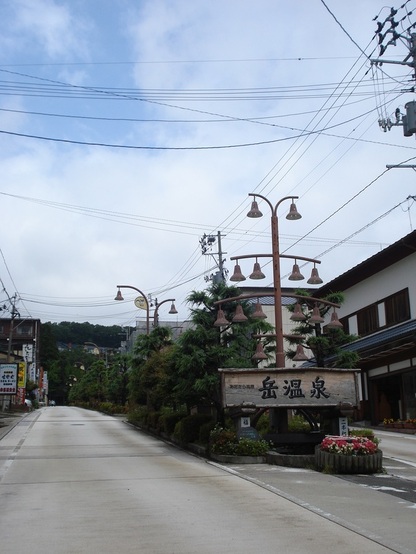
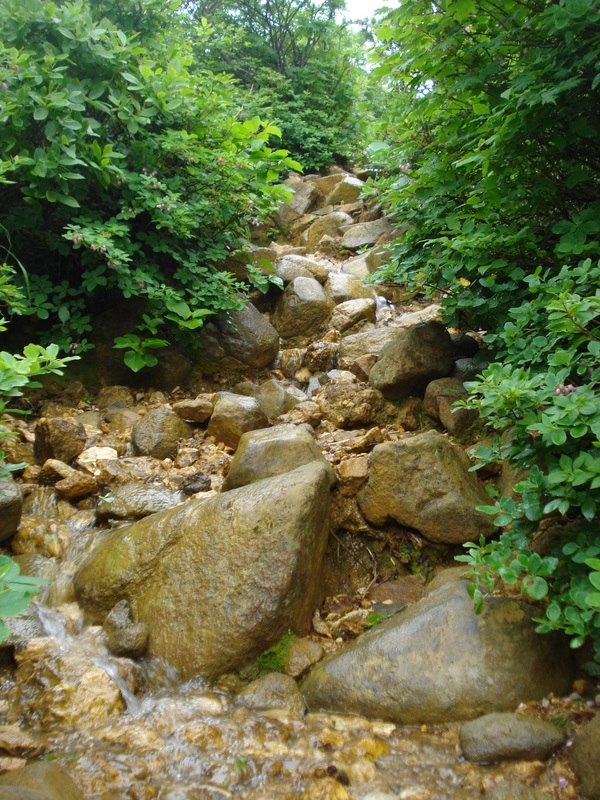
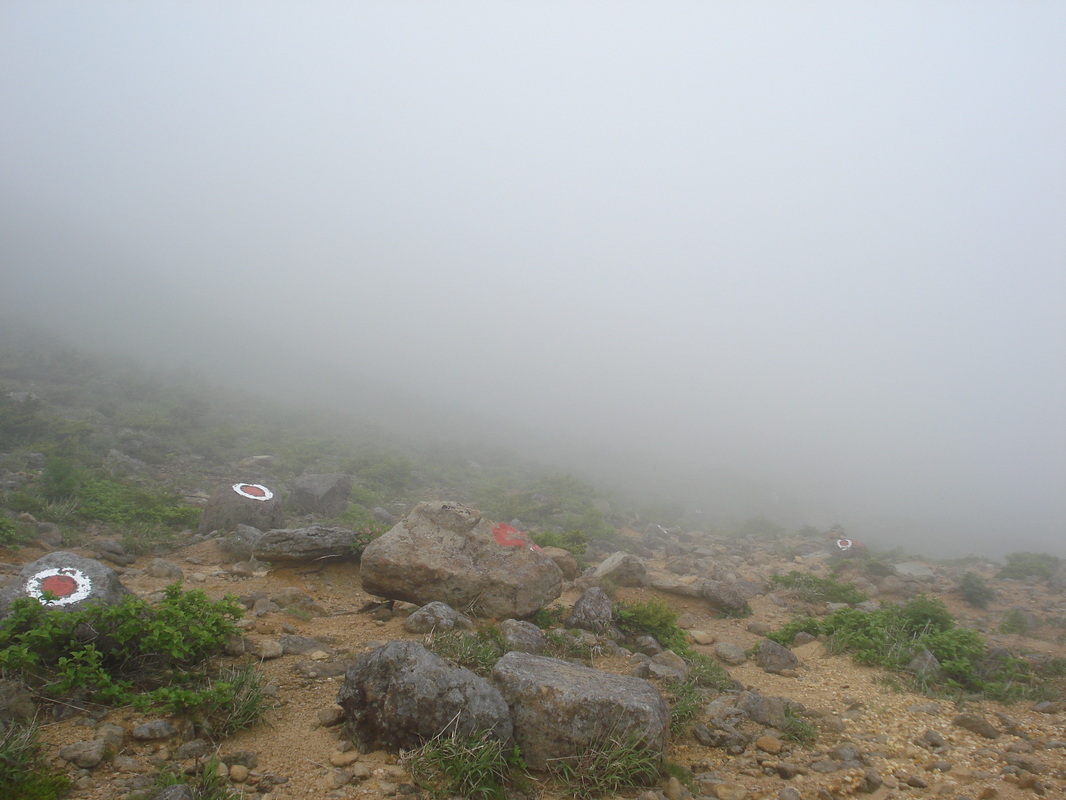
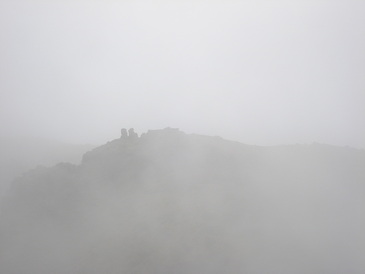
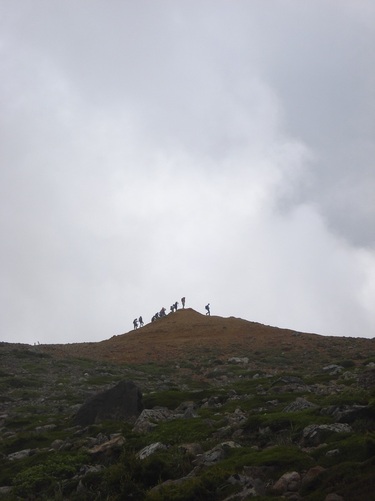
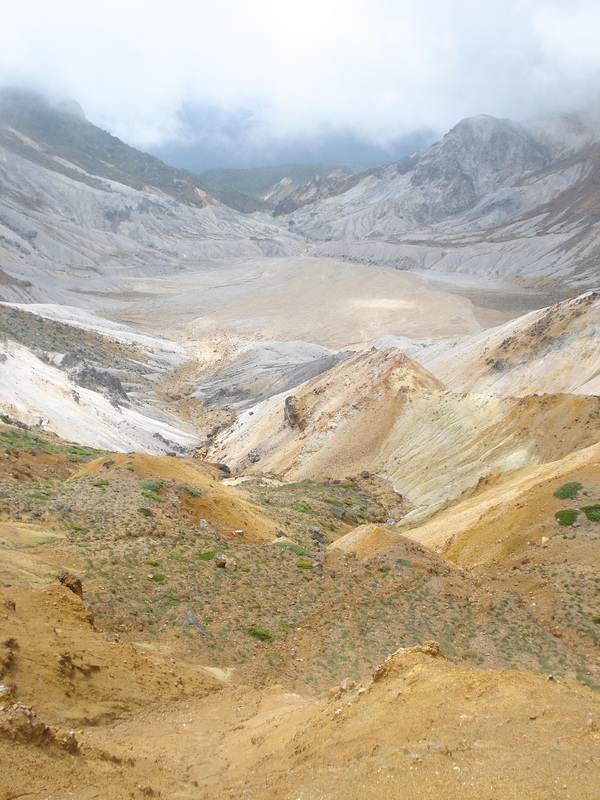
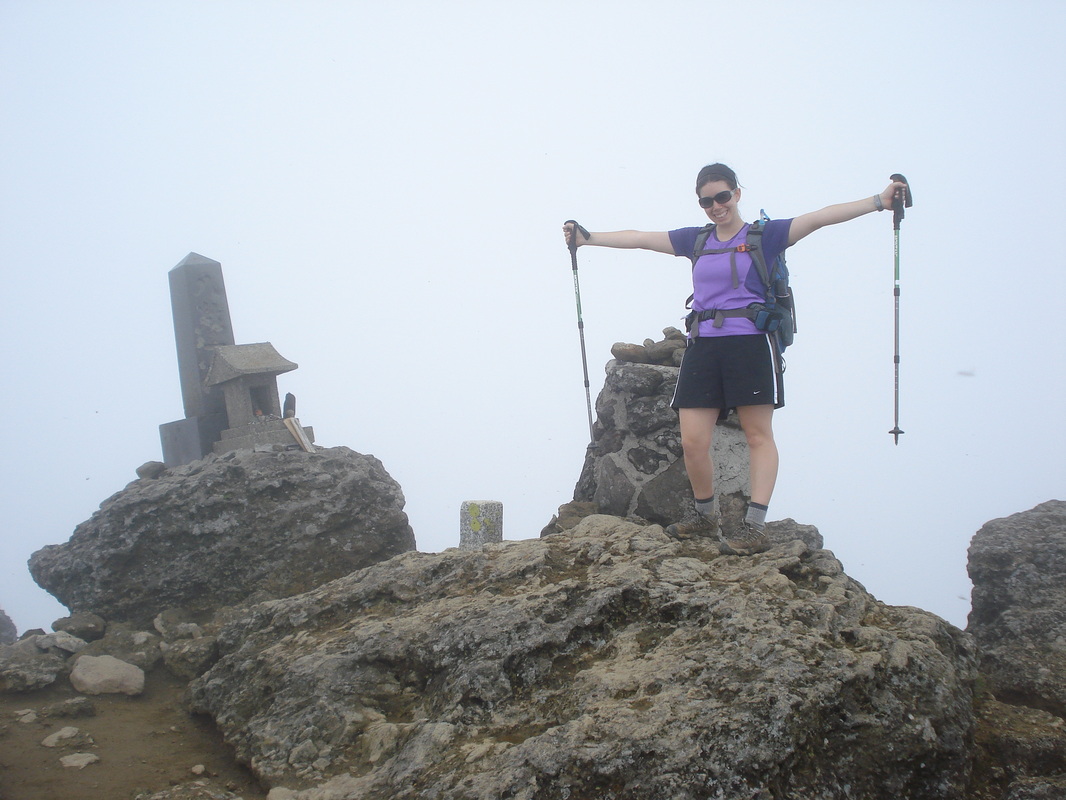
 RSS Feed
RSS Feed